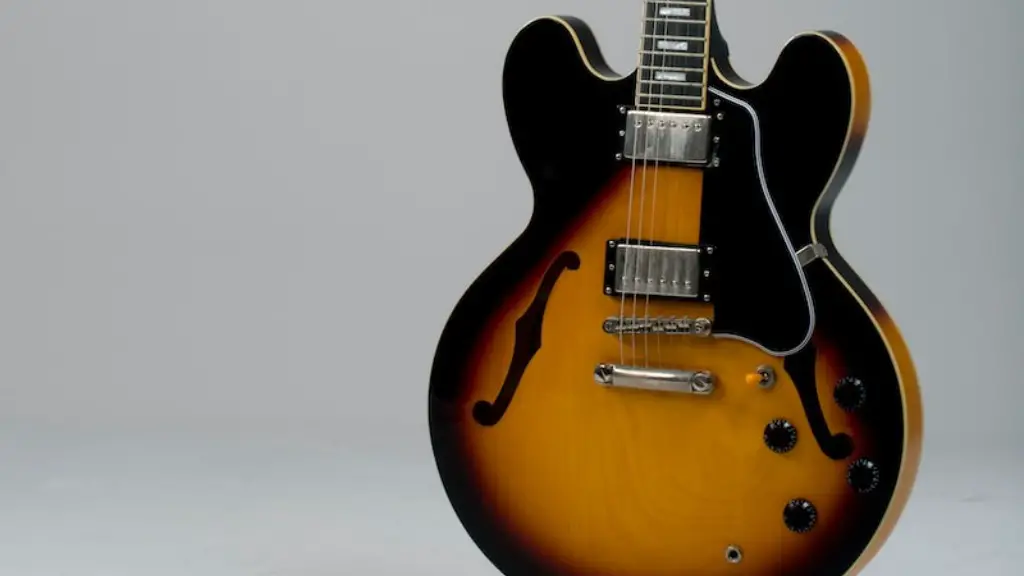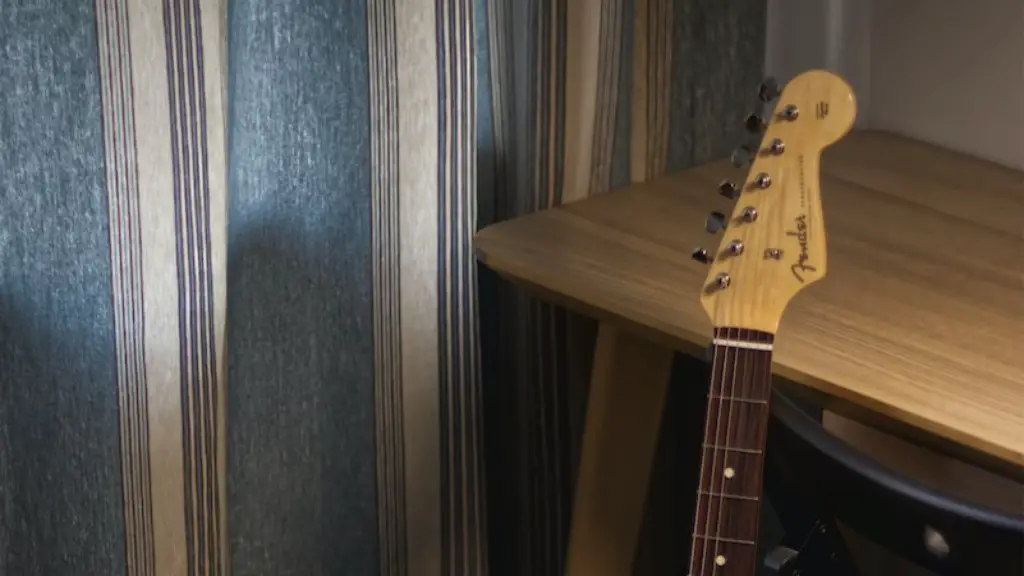A DI box, or direct input box, is an essential tool for electric guitar players. It allows them to plug their guitar into a sound system without any loss of tone or volume. The DI box also assists in balancing the level of the instrument with the rest of the audio in a live performance setting.
The most common type of DI box is a passive DI Box. This type of unit works by taking a high-impedance signal from the electric guitar and converting it to a low-impedance signal that can be sent directly to a mixing board or sound system. This helps ensure that the true sound of the instrument is preserved and allows for better sound quality overall.
A DI box can also be used in recording applications by sending the signal from an electric guitar directly into an audio interface or recording device. This helps ensure that the guitar’s natural tone is captured during recording without any additional processing or coloration of the signal.
In short, a DI Box is an indispensable tool for any electric guitarist who plays live or records music, allowing them to maintain their instrument’s natural tone and volume while ensuring it blends properly with other instruments in any given mix.
Benefits of Using a DI Box
Using a DI box for an electric guitar has many benefits that can improve sound quality and make it easier to record. DI boxes allow you to take the sound from the guitar and convert it into a line level signal, which can be sent directly to a mixing console or audio interface. This eliminates the need for the use of amplifiers and speakers, which could otherwise cause feedback or create unwanted noise. Additionally, using a DI box allows you to shape the sound of your guitar, allowing you to adjust things like EQ and compression before it reaches your recorder.
A DI box also provides protection against ground loops, which can occur when multiple pieces of equipment are connected together. By blocking ground loops, a DI box helps ensure that your recordings have consistent sound quality, free from electrical buzz or hum. Finally, using a DI box makes it easy to send your guitar signal directly into any recording device. This gives you greater flexibility for recording in different environments, as well as improved portability in live situations.
DI Boxes for Electric Guitar
A DI Box (Direct Injection) is an essential tool for any electric guitar player. It helps to convert an unbalanced high-impedance signal from a guitar into a balanced low-impedance signal. This allows the signal to travel longer distances without suffering from noise or interference. DI Boxes come in a variety of types, including active and passive, as well as single channel and stereo.
Active DI boxes offer more features than passive boxes, such as adjustable gain control, ground lift switch, and balanced line outputs. Active DI boxes are also much quieter than their passive counterparts and offer greater control over the sound of your guitar.
Passive DI boxes do not require external power and are typically used when running long cable runs with multiple guitars. They are also very inexpensive compared to active DI boxes, making them the perfect choice for beginner guitarists who are just starting out.
Stereo DI boxes allow you to send two signals at once: one to the amplifier and one to the mixing console or recording device. This can be useful if you want to record with two different sounds simultaneously or blend two different sounds together in post-production.
Single channel DI boxes are best used when recording one instrument at a time or when sending one signal directly into a mixing board. They are often used by studio engineers who need clear audio with minimal noise or interference.
Whether you’re a
How Does a DI Box Work?
A DI box (Direct Injection box) is an essential piece of equipment for any electric guitar player. It allows the player to connect their guitar directly to a mixing console or other recording device without introducing noise or distortion. A DI box takes the unbalanced signal from the guitar and converts it into a balanced signal that can be sent long distances without losing quality. The DI box also provides impedance matching, which ensures that the signal is not too weak or too strong and that the sound remains consistent. This allows for greater flexibility when recording or performing live.
Most DI boxes also have additional features such as level adjusters, ground lifts, and pads that can help to fine-tune the sound and minimize noise. They are especially useful when using multiple instruments on stage, as they ensure that each instrument is heard clearly and with no interference from other signals. A DI box is a must-have tool for any electric guitarist looking to achieve the best sound possible in a live setting.
Advantages of Using a DI Box for Electric Guitar
A DI box, or direct input box, is an essential tool for electric guitarists when recording, performing live, and even practicing. A DI box serves as a convenient and reliable way to connect the instrument to a sound system or recording interface. It provides many advantages including improved sound quality, increased control over the signal, and protection from electrical interference.
Using a DI box allows the electric guitar to be connected directly to a mixing board or audio interface without any risk of ground loops. This ensures that the signal is clean and free from interference while providing better sound quality overall. The direct connection also gives guitarists more control over their sound by allowing them to change their tone on the fly with pedals and effects.
DI boxes also provide protection from electrical anomalies like power surges or incorrect wiring in venues. This helps prevent damage to the instrument or other equipment due to unexpected problems in the electrical system. Furthermore, it gives guitarists peace of mind knowing that their performance will not be affected by dodgy connections.
In short, using a DI box offers numerous benefits for electric guitarists who are looking for improved sound quality and greater control over their tone when performing live or recording in studio settings. With its reliable connection and added protection from electrical interference, it is an invaluable tool for any guitarist who wants to take their playing to the next level.
Disadvantages of Using a DI Box for Electric Guitar
Using a DI Box for electric guitar can be a great way to increase the sound quality of your instrument. However, there are some disadvantages to using one. One of the biggest drawbacks is the cost; DI boxes can be expensive and may not fit into everyone’s budget. Additionally, DI boxes are designed to work with balanced cables, which may not be compatible with some amps or instruments.
DI boxes also require additional setup compared to plugging directly into an amp or mixer. This can add time and complexity to your live performances, something that many guitarists don’t want to deal with during a show. Finally, while they do improve sound quality, they don’t always produce the same sound as plugging directly into an amp. You may find that you prefer the sound of one method over another.
Overall, while DI boxes can be useful tools in certain situations, they aren’t always necessary and can add cost and complexity to your setup. Consider your needs carefully before investing in one for your electric guitar rig.
Connecting an Electric Guitar to a PA System with a DI Box
Connecting an electric guitar to a PA system can be done through the use of a DI box. A DI (Direct Injection) box is essentially an interface that allows you to connect your electric guitar to your PA system. It acts as a bridge between the two, allowing you to route the signal from your guitar into the PA system. The DI box also provides impedance matching and additional signal conditioning, ensuring that your guitar’s sound is properly amplified on stage. To make the connection, simply plug your instrument cable into the input of the DI box and then connect the output of the DI box to your PA system via an XLR cable. Once connected, you’ll be able to adjust levels, add effects and tweak tone using your amplifier or mixer. DI boxes are essential for getting great sound out of an electric guitar on stage. Be sure to set up in advance so that you can get great sound quickly and easily when you go live!
Final Words
A DI box is a tool that can be used to help an electric guitar player send their sound to the PA system. By connecting the guitar to the DI box, the signal is converted into a balanced signal that is suitable for use with a mixer or an amplifier. It’s an essential tool for any electric guitar player who wants to ensure their sound is heard clearly and accurately. The use of a DI box can help preserve the tone of your electric guitar as it goes out to the PA system. With its ability to provide clean and consistent sound, a DI box should be considered an essential part of any electric guitarist’s toolkit.





